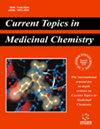小檗胺的药理和治疗潜力:一种来自小檗属植物的强效生物碱
IF 2.9
4区 医学
Q3 CHEMISTRY, MEDICINAL
Current topics in medicinal chemistry
Pub Date : 2024-04-30
DOI:10.2174/0115680266289292240420062705
引用次数: 0
摘要
:小檗胺(Berbamine,Ber)是一种活性药用双苄基异喹啉生物碱,通常从小檗科小檗属的不同植物中提取,在传统中医和阿育吠陀医学体系中用于治疗各种疾病。大量体外和体内研究表明,小檗通过上调促凋亡蛋白(Bax、p53)和下调抗凋亡蛋白(Bcl-2、survivin),对不同细胞株(SMMC-7721、A549、MDA-MB-231 和 K562)具有凋亡和细胞毒性潜力。Ber 的其他药理作用还包括保护心脏、抗糖尿病、抗炎、抗疟、抗氧化、抗高胆固醇血症和抗过敏。此外,在不同的模型中,Ber 的协同作用提高了不同药物(紫杉醇(PTL)、吉西他滨、地塞米松、多柔比星(DOX)和塞来昔布)的治疗潜力。各种尝试可以制造出具有生物活性的伯胺衍生物,如 4-氯苯甲酰伯胺(CBB)和 O-4-乙氧基丁基伯胺(EBB)。这篇综述重点介绍了 Ber 的医学应用,尤其是抗癌、保护心脏和抗炎方面,以及其作用机制。本文章由计算机程序翻译,如有差异,请以英文原文为准。
Pharmacological and Therapeutic Potential of Berbamine: A Potent Alkaloid from Genus Berberis
: Berbamine (Ber) is an active medicinal bisbenzylisoquinoline alkaloid, which is usually obtained from different plants of the genus Berberis (family Berberidaceae) and is used to cure various disorders in traditional Chinese and Ayurvedic systems of medicine. Numerous in-vitro and in-vivo studies revealed the apoptotic and cytotoxic potential of Ber against different cell lines (SMMC-7721, A549, MDA-MB-231, and K562) by upregulating pro-apoptotic (Bax, p53) and downregulating anti-apoptotic (Bcl-2, survivin) proteins. Other pharmacological attributes ascribed to Ber included cardioprotective, anti-diabetic, anti-inflammatory, antimalarial, antioxidant, anti-hypercholesterolemic, and anti-allergic. Moreover, the synergistic effect of Ber improved the therapeutic potential of different drugs (paclitaxel (PTL), gemcitabine, dexamethasone, doxorubicin (DOX), and celecoxib) in different models. Various attempts could fabricate biologically active derivatives of Ber, such as 4-chlorobenzoyl berbamine (CBB) and O-4- ethoxyl-butyl-berbamine (EBB). The review focuses on the medicinal applications of Ber, particularly anti-cancer, cardioprotective, and anti-inflammatory, along with the mechanism of action.
求助全文
通过发布文献求助,成功后即可免费获取论文全文。
去求助
来源期刊
CiteScore
6.40
自引率
2.90%
发文量
186
审稿时长
3-8 weeks
期刊介绍:
Current Topics in Medicinal Chemistry is a forum for the review of areas of keen and topical interest to medicinal chemists and others in the allied disciplines. Each issue is solely devoted to a specific topic, containing six to nine reviews, which provide the reader a comprehensive survey of that area. A Guest Editor who is an expert in the topic under review, will assemble each issue. The scope of Current Topics in Medicinal Chemistry will cover all areas of medicinal chemistry, including current developments in rational drug design, synthetic chemistry, bioorganic chemistry, high-throughput screening, combinatorial chemistry, compound diversity measurements, drug absorption, drug distribution, metabolism, new and emerging drug targets, natural products, pharmacogenomics, and structure-activity relationships. Medicinal chemistry is a rapidly maturing discipline. The study of how structure and function are related is absolutely essential to understanding the molecular basis of life. Current Topics in Medicinal Chemistry aims to contribute to the growth of scientific knowledge and insight, and facilitate the discovery and development of new therapeutic agents to treat debilitating human disorders. The journal is essential for every medicinal chemist who wishes to be kept informed and up-to-date with the latest and most important advances.

 求助内容:
求助内容: 应助结果提醒方式:
应助结果提醒方式:


